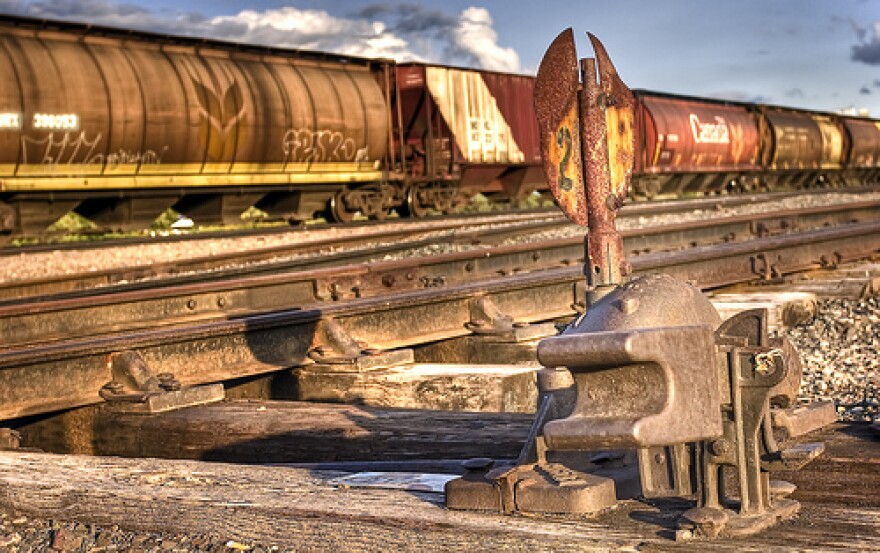You may not often see them, but plenty of trains crisscross Wisconsin these days carrying freight. The state and rail companies have been bringing old lines back to life because of increased demand, but much work is needed.Jeff Plale is state commissioner of railroads.
“What people think of as kind of a dead mode of transportation really isn’t; it’s going gangbusters,” Plale says.
Plale says several industries are fueling the boom.
“The movement of frac sand in the state, the movement of grain, the movement of fertilizer, especially this time of year, its exploding,” Plale says.
And, Plale says you can’t forget coal. Power plants here import it, to generate energy.
While use of freight rail has grown, Plale cites one hitch – old tracks. We met at the Wisconsin and Southern Rail Yard on Milwaukee’s Northwest side. It used to be an industrial enclave, but not much is left.
“These are examples of old rail here,” Plale says. The tracks were assembled in the 19th and 20th centuries.
“These are what would be called 90 pound rail. If you take a three-foot section and just chop it off and weight it, it would weight about 90 pounds. That kind of rail can’t sustain modern engines or modern boxcars or modern hopper cars,” Plale says.
Plale says a section of rail should weigh 115 pounds to withstand today’s faster speeds. He says Wisconsin has upgraded some lines, but not all, including in Milwaukee. So trains here must slow to a crawl – 10 miles per hour.
“If you take this line north out of Milwaukee, it used to be 10 MPH all the way up into the Fox Valley. It’s now 40 MPH. If you’re standing in the city of Madison, that train that went from Madison out to Prairie du Chien on the Mississippi River, that was 10, maybe 15 MPH at the top. Now that’s moving 40 MPH,” Plale says.
What’s unusual in Wisconsin is the fact the state owns quite a few tracks here. It bought a struggling rail line, decades ago, to save the infrastructure, and then became responsible for it.
According to the DOT, half of those lines can handle speeds of only 10 MPH.
Lawmakers included nearly $53 million in additional freight rail spending, in the budget they passed last week. The DOT had requested seven million more.
Racine Representative Corey Mason says a healthy system would help Wisconsin recover from the recession.
“You’ve got communities that manufacture goods that need to get to market. You’ve got facilities that need raw materials brought in to do the good work that we do. I think we ought to be investing in freight rail preservation and the bonding that goes along with it to ensure freight rail is not something that far too many people think of as something that once was, but rather something that’s growing,” Mason says.
In Wisconsin today, there are eight rail lines and 3,300 miles of track, according to Holly Arthur. She’s with the Association of American Railroads. Arthur says outside Wisconsin, private companies own about 140,000 miles of freight track. And she says the industry invests a lot of money keeping the infrastructure strong.
“It is the envy of the world, the U.S. rail network. A lot of countries come here to learn how our freight railroads maintain and build their networks,” Arthur says.
Arthur says freight rail across the U.S. is experiencing slow growth, as businesses pull free from the recession’s grip.
The bottom line, according to Wisconsin Commissioner Jeff Plale, is that freight rail helps carry the economy.
“Every time you see a train move, somebody bought something and somebody sold something,” Plale says.

